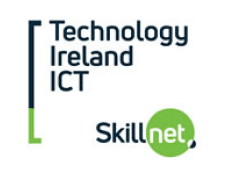About This Course
The CompTIA Security+ certification is an internationally recognised industry-standard qualification for anyone in an IT role, held by more than half a million people worldwide.
This online course will teach you the most important foundational principles for securing a network and managing risk. It will also cover access control, identity management and cryptography, as well as the selection of appropriate mitigation and deterrent techniques to address network attacks and vulnerabilities. This vendor-neutral certification will also raise your understanding of security concerns associated with cloud computing, BYOD (bring your own device) and SCADA (supervisory control and data acquisition).
Duration: 16 weeksParticipants: 25
Certification: CompTIA Security+ + SY0-501
Learning Outcomes
- Installing and configuring systems to secure applications, networks and devices
- Performing threat analysis and responding with appropriate mitigation techniques.
- Participating in risk mitigation activities
- Operating with an awareness of applicable policies, laws and regulations
Who Should Attend
Students should already have the Microsoft Security Fundamentals exam. This course is for those who want a career in IT Security.
Course Syllabus
Module 1: Threats, Attacks and Vulnerabilities
- Given a scenario, analyse indicators of compromise and determine the type of malware
- Compare and contrast types of attacks
- Explain threat actor types and attributes
- Explain penetration testing concepts
- Explain vulnerability scanning concepts
- Explain the impact associated with types of vulnerabilities
Module 2: Technologies and Tools
- Install and configure network components, both hardware and software-based, to support organizational security
- Given a scenario, use appropriate software tools to assess the security posture of an organization
- Given a scenario, troubleshoot common security issues
- Given a scenario, analyse and interpret output from security technologies
- Given a scenario, deploy mobile devices securely
- Given a scenario, implement secure protocols
Module 3: Architecture and Design
- Explain use cases and purpose for frameworks, best practices and secure configuration guides
- Given a scenario, implement secure network architecture concepts
- Given a scenario, implement secure systems design
- The importance of secure staging deployment concept
- The security implications of embedded systems
- Summarize secure application development and deployment concepts
- Summarize cloud and virtualization concepts
- How resiliency and automation strategies reduce risk
- Explain the importance of physical security controls
Module 4: Identity and Access Management
- Compare and contrast identity and access management concepts
- Given a scenario, install & configure identity and access services
- Given a scenario, implement identity and access management controls
- Given a scenario, differentiate common account management practices
Module 5: Risk Management
- Explain the importance of policies, plans and procedures related to organizational security
- Summarize business impact analysis concepts
- Explain risk management processes and concepts.
- Given a scenario, follow incident response procedures.
- Summarize basic concepts of forensics.
- Disaster recovery and continuity of operation concepts.
- Compare and contrast various types of controls.
- Given a scenario, carry out data security and privacy practices.
Module 6: Cryptography and PKI
- Compare and contrast basic concepts of cryptography.
- Explain cryptography algorithms and their basic characteristics.
- Given a scenario, install & configure wireless security settings.
- Given a scenario, implement public key infrastructure.







